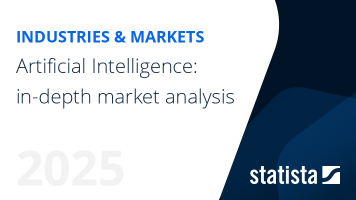Speech Recognition - Southeast Asia
Southeast Asia- The market size in the Speech Recognition market is projected to reach US$299.29m in 2025.
- The market size is expected to show an annual growth rate (CAGR 2025-2031) of 17.63%, resulting in a market volume of US$792.73m by 2031.
- In global comparison, the largest market size will be United States (US$2.64bn in 2025).
Definition:
Speech recognition, as a part of computer vision, focuses on converting spoken language into written text and/or commands. It involves the use of algorithms and machine learning models to analyze and interpret audio signals, recognizing and transcribing the spoken words into textual form. Speech recognition systems utilize techniques such as acoustic modeling, language modeling, and neural networks to accurately convert spoken language into written text. This technology has widespread applications, including voice assistants, dictation software, transcription services, call center automation, and hands-free control of devices, facilitating natural and efficient human-machine communication through spoken language.
Additional Information:
The market comprises two key performance indicators: market sizes and market sizes by industry. Market sizes are generated by the funding amount of Computer Vision companies. Key players of the market include companies such as Nvidia, Intel or IBM.
For more information on the data displayed, use the info button right next to the boxes.
- Technologies that convert human speech into written text or computer commands, such as automatic speech recognition (ASR)
- Products and services that use speech recognition technology, such as virtual assistants, transcription software, and language translation tools.
- Technologies that do not rely on speech as an input, such as text-based chatbots and image recognition software
- Products and services that do not use speech recognition technology, such as physical goods and traditional customer service support.








